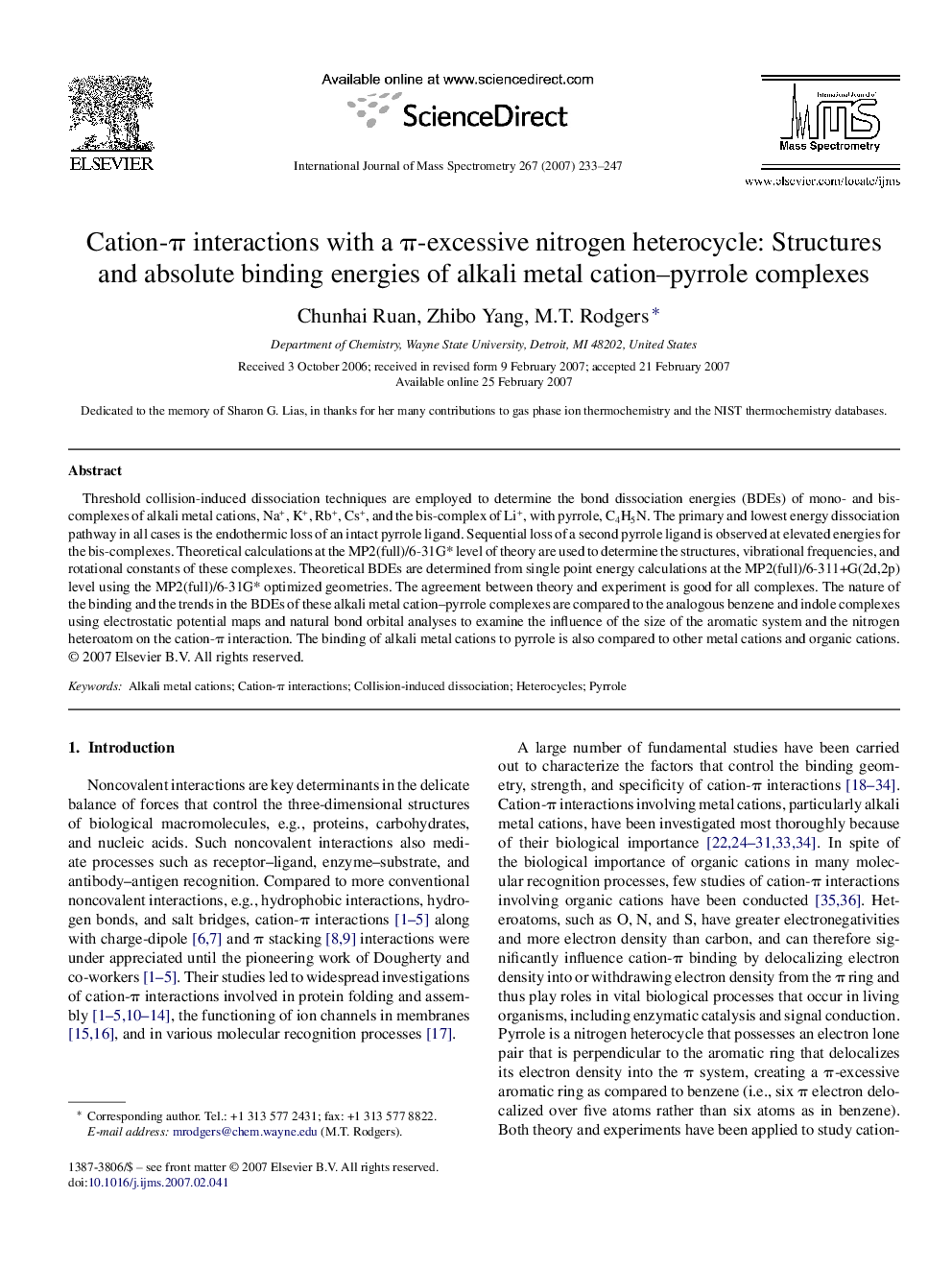| Article ID | Journal | Published Year | Pages | File Type |
|---|---|---|---|---|
| 1193369 | International Journal of Mass Spectrometry | 2007 | 15 Pages |
Abstract
Threshold collision-induced dissociation techniques are employed to determine the bond dissociation energies (BDEs) of mono- and bis-complexes of alkali metal cations, Na+, K+, Rb+, Cs+, and the bis-complex of Li+, with pyrrole, C4H5N. The primary and lowest energy dissociation pathway in all cases is the endothermic loss of an intact pyrrole ligand. Sequential loss of a second pyrrole ligand is observed at elevated energies for the bis-complexes. Theoretical calculations at the MP2(full)/6-31G* level of theory are used to determine the structures, vibrational frequencies, and rotational constants of these complexes. Theoretical BDEs are determined from single point energy calculations at the MP2(full)/6-311+G(2d,2p) level using the MP2(full)/6-31G* optimized geometries. The agreement between theory and experiment is good for all complexes. The nature of the binding and the trends in the BDEs of these alkali metal cation-pyrrole complexes are compared to the analogous benzene and indole complexes using electrostatic potential maps and natural bond orbital analyses to examine the influence of the size of the aromatic system and the nitrogen heteroatom on the cation-Ï interaction. The binding of alkali metal cations to pyrrole is also compared to other metal cations and organic cations.
Related Topics
Physical Sciences and Engineering
Chemistry
Analytical Chemistry
Authors
Chunhai Ruan, Zhibo Yang, M.T. Rodgers,
